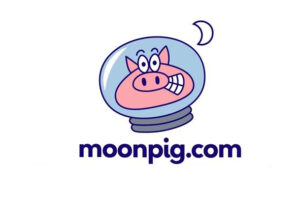In this article we’ll be looking at marketing budgets and how to work out what’s working and what’s not. Because beneath the fluffiness, marketing is maths.
John Wanamaker reputedly said. “Half of the money I spend on advertising is wasted, the trouble is I don’t know which half”. Pithy as this undoubtedly is, for many business owners this would also be aspirational. What happens if you’re not clear about what’s working – and suspect that the majority of your marketing budget is wasted?
I’ll show you a simple method of evaluating the various marketing channels within your marketing strategy. This will allow you to conduct a proper strategic review, which will then help you make better decisions in the future.
The number 1 mistake when it comes to marketing
In his book The Road Less Stupid, Keith Cunningham talks about the Dumb Tax. This is the money you pay for making bad decisions.
We see this often in decisions around marketing. In the ‘busy-ness’ of running your business, it’s too tempting to buy into the latest ‘silver bullet’, to believe in the big promises. And when they don’t deliver, you’re then stuck between the urge to ditch it and the fear you may be giving in and crystallising your losses just as it’s about to work.
The next time you wonder whether to invest £xxx in whatever marketing activity, stop and ask yourself this question:
“How many qualified leads will this need to generate to make it an investment rather than a cost?”
This will get you focussed on the right things – and often just the process of working this out will clarify whether you should take it on.
It’s the sanity checker that allows you to ‘press the button’ with confidence – and also the thing that will allow you to properly monitor progress at every stage. Knowing whether to increase, refine or ditch.
Let’s look at how you work it out.
Because marketing is maths

On a recent Biz-X Podcast I listened in to former Dragon and Moonpig.com founder Nick Jenkins talking all things business. He spoke about everything from marketing to buying businesses and overall it’s one of the most interesting podcasts (from the perspective of a business owner) I’ve come across in a long while.
Consider this one statement for a moment: “It’s easier to teach a mathematician how to be a marketing person than it is to teach a marketing person how to be a mathematician.”
This goes to the core of your marketing challenge: do you want fluffiness and things that sound good? Or do you want results?
I’m not a mathematician, so what do I do next?
Luckily you can make a great start without being a great mathematician.
Every year in December I review my marketing for the previous 12 months. It’s one of my most valuable business habits.
You can follow a simple process to do this, and it’s best done on an excel spreadsheet.
- Create a list of every marketing activity you have engaged in (eg SEO, Pay Per Click, Magazine Advertising, networking etc – there are 80+ potential options to choose from)
- Tally up how much money you ‘invested’ (including a value for ‘time spent’) in each one
- And then tally up how many qualified leads were generated by each one
- If you divide the leads generated into the amount spent, you’ll calculate the Cost per Qualified Lead (CQL) for each marketing channel
This will allow you to compare like-for-like every marketing channel you use. You will actually know which one is best – as things stand.
Next, you’ll need some context
It’s great to know the Cost per Qualified Lead for each channel, but how do you know whether that represents good value for money?
If your best marketing channel – let’s say that’s SEO – is generating leads at a rate of £100 each, that may seem great. But if your average order size is only £50 per customer, you’re going to find it tough to get a return on investment even if you convert every single lead and your customer retention / repeat business strategies are best-in-class.
Knowing your Average Gross Profit per Customer is the thing that provides context.
If you can generate leads and turn them into customers for less than they will generate in Gross Profit, you’re at least breaking even – which is a starting point. Whether that’s good enough to grow your business will then depend on how good you are at retaining those customers.
NB: It’s not difficult to work this out – but it is quite cumbersome to explain in this format. If you’d like me to talk you through it, please do book in for a call.
So, which of my marketing channels do add up?
My annual marketing review tells me with total clarity which marketing channels are working best – purely on an empirical CQL basis. For my business, the Top 5 marketing activities are:

- Client referrals
- BNI
- General networking
- Website
- Social media / Content
Also, I know the percentage of leads who become clients is 24.5%* and so if I decide my ideal 2024 involves taking on 1 new client a month, I know my marketing strategy needs to generate 48 leads in the year.
I’m prepared to pay the first 3 months of coaching fees to my client acquisition budget, so any marketing channel that generates leads for less than a quarter of that is a ‘thumbs up’ from me.
NB: Interestingly, the only marketing strategy that doesn’t generate leads within my budget is social media (once I’ve factored in time spent). But, I believe it enhances all the other channels that do provide a Return on Investment – and I enjoy it.
* this is quite a high number as my marketing is designed to generate inbound leads – if you’re actively hunting leads, a good number is probably closer to 10% or even less.
Now you have the foundations to conduct a proper marketing strategy review
This prep work makes the questions you need to ask yourself when you review your marketing so much easier to ask and answer.
- Is this particular marketing activity working? (ie generating leads at a cost that is within your CQL budget).
- If it is, can I improve the way I do it?
- Can I scale it up through increased activity / budget?
- If it’s not working, do I have a clear idea of how to improve it?
- Does any potential new marketing activity ‘fit’ with what I’m doing already? (for example if you’re doing SEO for your website it makes sense to produce great content – and if you’re producing great content it makes sense to also use it across social media.)
- Do I have the skills, budget and other resources to execute a potential new marketing activity better than 75% of my competitors?
Back to the man at Moonpig.com

Nick Jenkins based his marketing decisions on the amount of Gross Profit an average customer would generate for the business in the first 2 months.
For Moonpig.com this Gross Profit number was £10. And he was happy for his Customer Acquisition Budget to be as high as £9.
He chose 2 months and £9 based on two factors. That a newly generated customer should make a contribution to the overheads as soon as possible. And that their product and customer retention strategy were both very strong – which meant he would keep the average customer over the long term. Which would take care of future profitability.
Some marketing strategies ‘max out’
Interestingly, many marketing strategies Moonpig.com tried could only be scaled up to a certain point, beyond which the CQL ceased to be cost effective.
For example, paid search (Pay Per Click) was very effective up to a certain point, beyond which increases in budget failed to generate proportionate increases in leads. Thus increasing the CQL.
Likewise, PR was effective to a degree but very hard to scale.
And some marketing strategies are the gift that keeps scaling up
The game-changer for Moonpig.com was TV advertising. And this involved a great anecdote which gives an insight into his meticulous approach.
Jenkins was in the habit of ordering from his competitors, and he took note of whether their deliveries had a sequential order number. If they did, he could monitor how fast they were growing.

So, when he saw a competitor advertise on TV he was able to place a couple of orders in quick succession and see exactly what impact it had on their sales.
This provided him with enough ‘proof’ that it was a marketing activity worth pursuing for Moonpig.com.
He spent £50k on an initial campaign (plus the actual cost of creating the advert & jingle). Moonpig.com generated c5000 customers with the ad – which is an acquisition cost of c£10 each.
The next advert had a media budget of £100k. The third had a budget of £200k. And within 8 months had reached a spend of £1.2m.
Within 3 years of starting TV advertising, Moonpig.com had increased annual sales from £3m to £45m.
And the rest as they say is history.
Harness the power of ‘marketing is maths’ in your business
The next steps couldn’t be easier.
Open up a spreadsheet, list the marketing activities you’ve engaged & invested in and track how many leads have come from each.
Then work out how much you’ve invested in each one (including time) and divide by leads generated to calculate the Cost per Qualified Lead.
If you do nothing else, this will help you make more informed decisions for the coming year.
Call to Action
If you find this interesting and would like to discuss it in more detail in relation to your business, please do book in for a zoom coffee.
Some wise words to leave you with
“We looked at every possible marketing channel and spent as little money as we possibly could to work out what the Customer Acquisition Cost was. We then kept throwing money at it until it stopped working.” Nick Jenkins.




